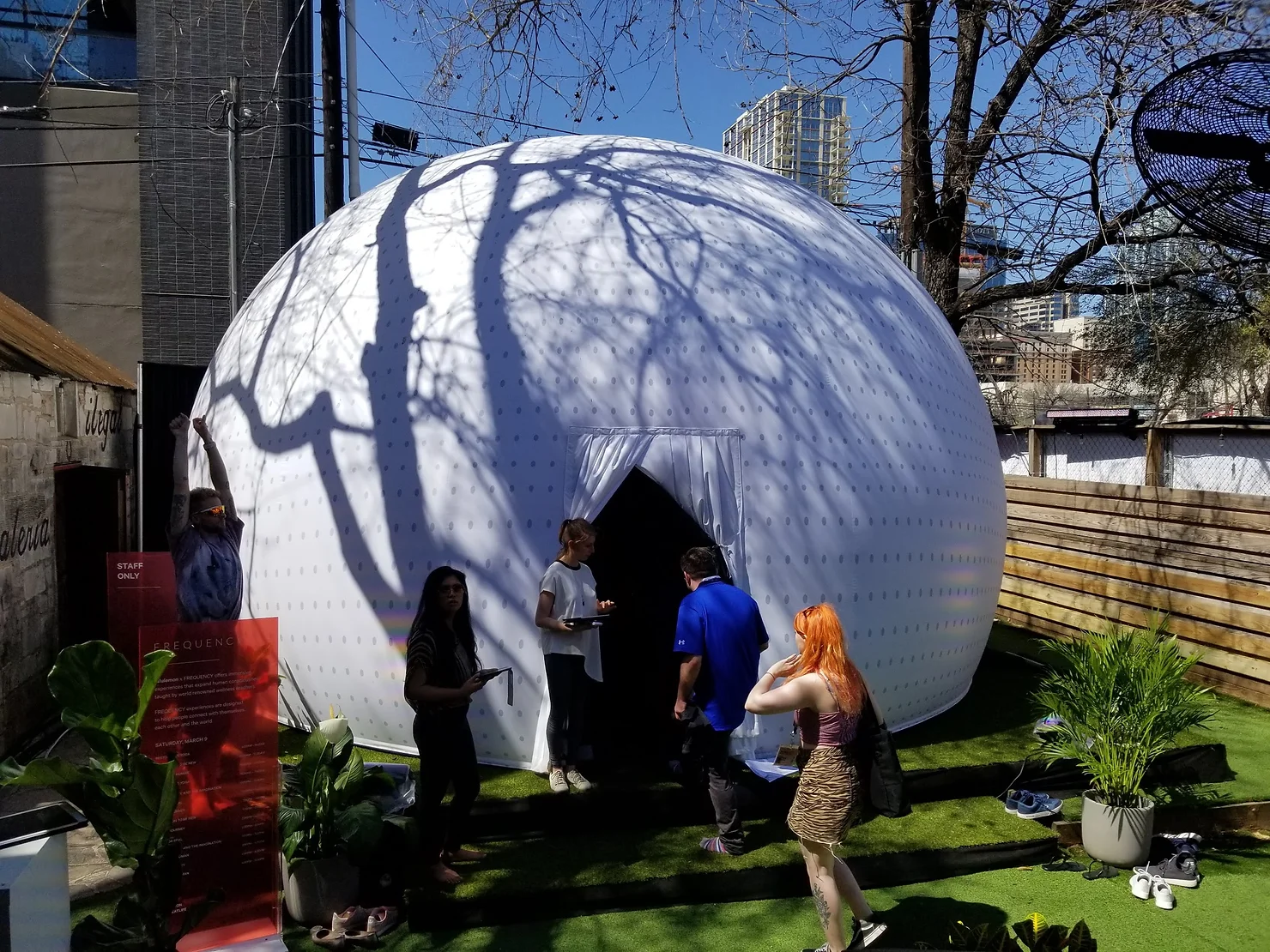Defining Immersive: In the Age of Everything Immersive

“How do you define an immersive experience?” This was a question posed as I sat in front of the small but packed room of eager participants at the German Haus at SXSW. I had been spontaneously invited to sit on a panel titled Exploring Immersive Media and Creating New Social Experiences which was a part of the German Haus’ “Creative Technology” series of events. I was accompanied by Nick Meehan, (Chairman and Artistic Director at the Institute for Sound and Music), Gerda Leopold (Director and Writer for VR films at Amiluxfilm), Kevin Bacon (Composer at KBUNLTD), and Michael Cohen (Professor at the University of Aizu). This question was not unfamiliar to any of us, yet it seemed to carry an important weight. The term ‘immersive’ is becoming a 'buzzword' that many companies are beginning to include in their marketing campaigns, so much so that sometimes I find people roll their eyes when I tell them that I work with immersive technology. There are many companies using the term ‘immersive’ in various ways, some of those applications I personally would not consider immersive. So how do we define this elusive term and how do we keep the meaning of the term from getting convoluted?
The term immerse or immersion was originally derived from the Latin word immergere and was defined as “to plunge in, dip into, sink, submerge.” The term was commonly used to relate to submersion in fluid, but was also used as a means of expressing a ‘plunge’ into an interest or situation. Currently there is a movement of creating immersive experiences, developing immersive technology, and creating user engagement through immersion. Everywhere we look this term is being used to explain the “Next Big Thing”.
In my view there are two ways that people are using the term immersive that relate back to its original definition. One use is to explain an experience that a participant is submerged in. There is a 360 degree nature to the experience that they become a part of. The other use of the term is in defining technologies that create a higher level of user engagement through user interaction, higher quality video and sound, or anything that pulls the user deeper into that experience. The former approach is using the term in its more literal sense, the latter takes the more figurative approach.

Immersive experiences that engage the user in a 360 degree experience can be created using technology or by building a physical environment that immerses the participant. Technological immersive experiences can include experiences using Virtual Reality (VR), fulldome or other 360 degree projection environments, or 3D sound arrays. Examples of physical immersive experiences would include immersive theater events, escape rooms, or the creation of new physical realities and worlds as famously created by theme parks like Disney World, or more recently Meow Wolf. I would also state that some music festivals and other pop-up festivals like Burning Man, or even SXSW, can be considered immersive experiences. Some of these experiences involve audience interaction while some rely on the more familiar audience as an observer model. Some are focused on the digital or virtual recreation of an environment while others focus on creating imaginative physical environments. However, all of these formats plunge the participant of these experiences into the fluid imagination of the creator and they are fully submerged into this new reality.

The other usage of the term ‘immersive experience’ explains an experience that creates a higher sense of user engagement through interactivity, augmentation, or higher quality sound and video. Experiences such as online shopping tools that augment reality, productivity tools such as Google docs and video conferencing, even simply having a higher quality sound and video component on a phone, tablet, computer, or TV are experiences that are being promoted as immersive. The physical submersion of the participant is not necessary as long as the experience can argue a higher sense of user engagement with the content. With this definition almost anything could be considered immersive and thus the term becomes convoluted.
When everything is immersive the word no longer holds any meaning. I argue that the term ‘immersive experience’ should be reserved to reference the movement that relates to the more literal definition of immersion and should be used to describe an experience in which you are fully submerged. An Immersive experience to me means being surrounded, submerged, plunged into an experience to the point that you forget, if even for just a moment, everything that keeps you tethered to your version of reality.
Below is a list of guidelines that I propose we use when defining an experience as immersive:
The experience should submerge the participant in a 360 degree environment.
Digital technology can be used to enhance an immersive experience but is not a necessity.
Interaction is not a reason for an experience to be deemed immersive, however; can enhance the experience.
Enhanced engagement should always be a goal, but should not be the sole reason for defining an immersive experience.
